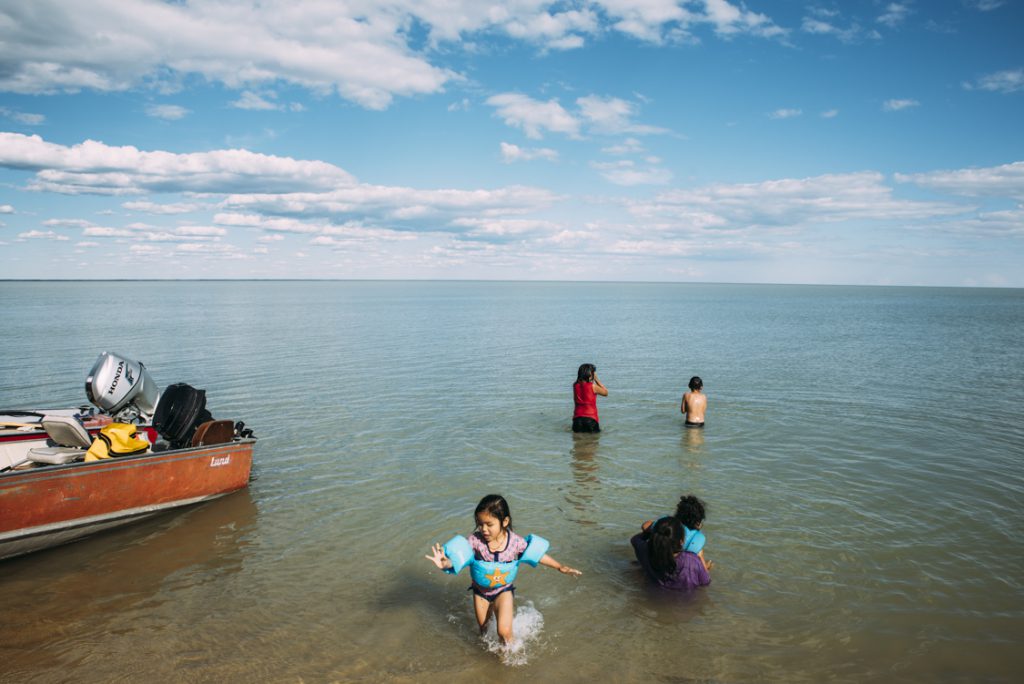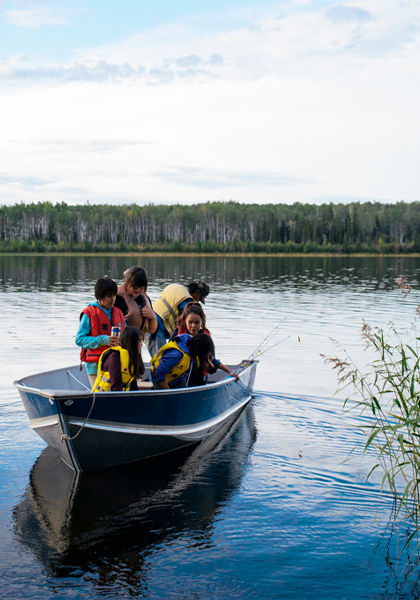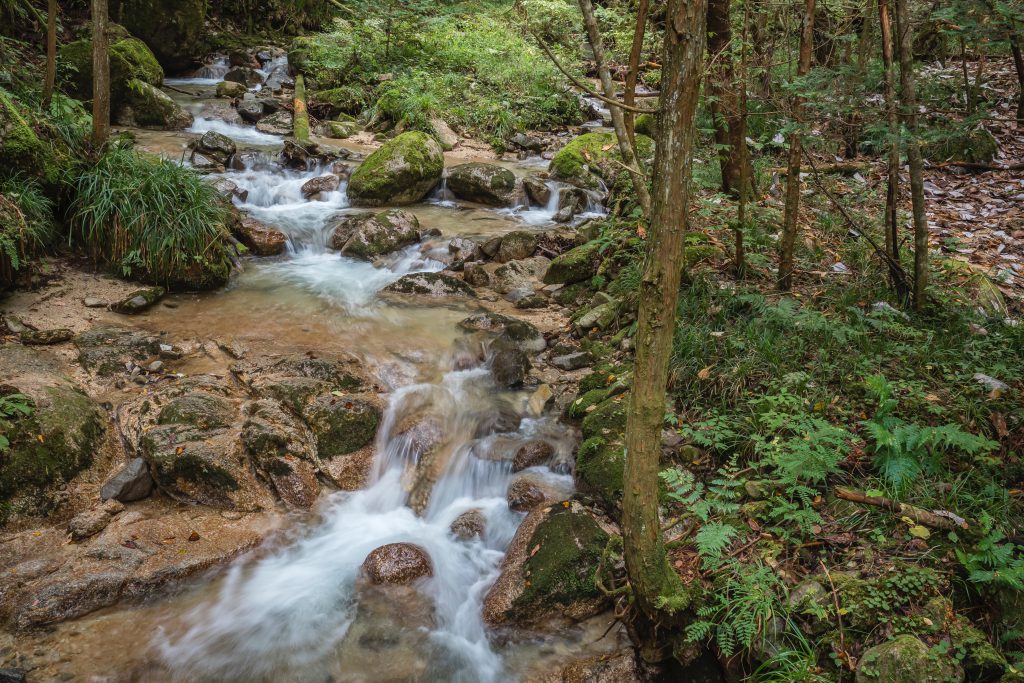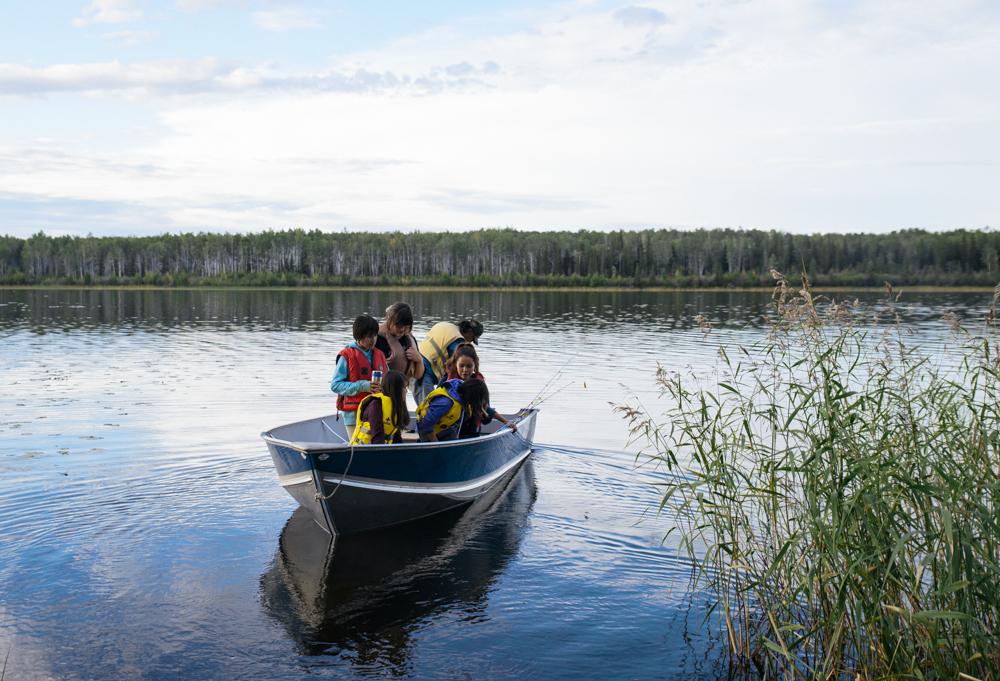By Chanel Best
Water is an important part of Canadian history and the identities of First Nations and settlers from coast to coast to coast. The long-term health of Canadian waterways that have served as meeting points for Indigenous gatherings, critical trade routes, and a source of relationality to one another, are at risk. Status-quo water governance is not enough to protect our most important natural resource. A new way of thinking about how we govern water in Canada is possible: a collaborative model with collaborative leadership at federal, provincial, municipal, and Indigenous governance levels, to ensure protection from the threat of pollution, overuse, and the climate crisis. At MakeWay, we work with several projects striving to transform the Canadian water policy landscape cohesively and collaboratively.

There have been steps made toward this goal. In 2019, the federal government committed to developing a national water agency – aiming to move away from siloed management and jurisdictional frameworks, and towards a more holistic approach that acknowledges the role of water in all facets of our daily lives. The following year the department of Environment & Climate Change Canada released a discussion paper outlining what a potential agency may encompass. The acknowledgements made in this paper are a step towards a more just and sustainable framework, but groundwork is moving slowly and there has been no further concrete action since.
Canada has an opportunity to model a global standard for water governance. Here are 7 reasons why we should develop a national standard for water:
1. Over 20% of the world’s freshwater is located in Canada.
We have more than 8,798,000 freshwater lakes —10 hectares more than every other country on Earth combined according to a study by McGill university. In addition to being home to the largest number of lakes in the world, Canada has the longest coastline. A common myth is that Canada has enough water that it will never run out. On average, Canadians use enough water to fill 40 hot tubs (or 200 bathtubs), every day. We use more water than anyone else in the world. Canada’s abundance of water means it is more easily used; this way of life can be only sustained if the water is available and protected. Managing a significant portion of the world’s freshwater supply means Canada has a significant responsibility to practice responsible water stewardship. At the federal level, there is a lack of cohesive, progressive policy, resulting in a heavy burden on civil society as conservation organizations, NGOS, and Indigenous leaders across the country step up to fill gaps in water stewardship.
2. Land back means water back.
In our current water management system, Indigenous authority over water management is inadequately recognized. First Nations, Inuit, and Métis hold significant legal authority over, and distinct relationships to, water management. Yet these communities are often left out of management decisions. Water discussions at the federal level cannot be held in isolation of Indigenous voices and rights recognitions. A national water strategy should advance the existing commitment the federal government has made to reconciliation with Indigenous Peoples. The framework should also uphold the conventions of the United Nations Declaration on the Rights of Indigenous Peoples (UNDRIP) which specifies the need to recognize Indigenous Nations’ rights to self-determination. The commitment to reconciliation must involve a new water management framework that recognizes and upholds Indigenous rights, perspectives, and knowledge systems related to water. Efforts that specifically acknowledge the right to self-governance, such as those implemented by Gitanyow Nation, that include a means to achieve greater autonomy in freshwater management, are necessary to ensure reconciliation is part of a potential federal water agency’s framework. This also means going further than designing a new water strategy for Canada in partnership with Indigenous peoples. The ongoing management should focus on upholding inherent international and treaty water rights through co-governance.
3. All environmental resilience is linked to water.
There are more than 200 federal departments and agencies in Canada, with more than 20 of these departments having freshwater responsibilities and over 75 interacting with water in one way or another. Canada has specific agencies for fish, agriculture, and natural resources – all of which impact and rely upon water – yet we do not yet have one for our most abundant resource. Water is central to all sustainable management efforts and without support for water it is difficult to practice effective stewardship of other areas. Grouping water in with other sectors often means individual water conservation efforts do not receive adequate support or can be neglected. The Canadian Coalition for Healthy Waters recommends implementing a fund designated specifically for water projects. This approach would benefit conservation across all sectors and would ensure capital is spread more evenly rather than diverted from other efforts. A federal water agency would have the capacity to support water efforts in other sectors while ensuring water as a standalone issue has sufficient resources.
4. Water is the lifeblood of Canada’s largest economic sectors.
A study by the Delphi Group revealed that in British Columbia, the watershed sector broadly supports over 47,000 jobs across the province, and over $5 billion to the provinces GDP. Without effective management and stewardship of water, critical sectors like agriculture and commercial fisheries are at risk of collapse due to climate change and ecosystem degradation. Investing in water is one way to ensure future economic stability, but also must be done in a way that limits impact on the ecosystems that local economies and livelihoods rely upon. Creating jobs and investing in water technology shifts the conversation and perhaps help guide water-intensive extractive industries towards alternative renewable water use practices. A Canadian water agency could explore water management from a sustainable economic lens and ensure investments in water are investments in a sustainable future economy.
5. Water knows no borders.
Water related issues are typically thought of as place-based. Yet many of our watersheds are transboundary, they intersect provincial or international borders. Addressing shared waters requires coalition between local communities, Indigenous leaders, and all levels of government. A federal water framework could reinforce partnerships, cooperation, and cross regional learning. Provincial conservation efforts exist and are still effective to some degree but there are barriers that make water protection efforts difficult such as outdated existing provincial conservation frameworks (Ontario’s safe water act has not been updated since 2006), and not accounting for geography. Water health on the southern border is also difficult to address without the support of the federal government. Political turnover further complicates water conservation, making it difficult to maintain consistency. Developing a central policy would make it easier to carry out long term visions and would ensure the same protection standards coast to coast. Ultimately, the work occurring on the federal level should act as complimentary to the efforts occurring on the ground undertaken by other governments.
6. Not protecting our water is an existential risk.
In Canada existing water shortages have been linked to health problems, threats to food supply, and disputes; these associated issues should be considered national health and security risks. Approximately 60% of Canada’s fresh water drains to the north, while 85% of the population lives within 300km of the US border. Due to our geography most of our freshwater is not easily accessible and water availability constitutes a major concern for water management. Even regions surrounding the great lakes, the largest freshwater basin in the world, sometimes experience chronic water shortages. The effects of human-caused climate change entail increased challenges for water-related threats. Investigating these threats requires sizable effort, a collaborative report from water leaders stresses the need for centralized water security. Creating a Canada Water Security Centre within a federal agency would support the mobilization to obtain the knowledge needed to predict and respond to water problems such as flooding, ground water mining, plastic in our waterways, aquatic species depletion, and water shortages.
7. We can’t wait any longer.
Canada faces an emerging water crisis, occurring alongside the everyday battles of a global climate crisis which already affects the day-to-day lives of Canadians. Canada’s watersheds need protection now. As a nation, we are failing to meet climate targets. We have yet to take the threat seriously and change our systems to effectively reduce emissions. Actions including pulling out of the Kyoto protocol have tarnished Canada’s reputation regarding environmental commitments, but now is the time to change that. The federal government has a unique opportunity to position Canada on the global stage as a leader in mobilizing necessary water protections. Covid-19 has enhanced conversations about the water policy landscape, and strategies such as the Build Back Blue have emphasized the time sensitivity of reacting to solve a crisis. Canada can set international standard for water conservation by creating an agency dedicated to integrated water protection and management. Committing to a national water strategy is only the start to preserving ecology for the future generations. Acting now proves we are committed to implementing structures that challenge the status quo.
The Canadian Freshwater Alliance, BC Freshwater Initiative, Forum for Leadership on Water (FLOW), and Our Living Waters are all projects on MakeWay’s shared platform which provides operational supports, governance, and charitable expertise for changemakers. Each project is working on unique place-based solutions, policy responses, and community engagement required to achieve the ambitious goal of all waters in Canada in good health by 2030.



